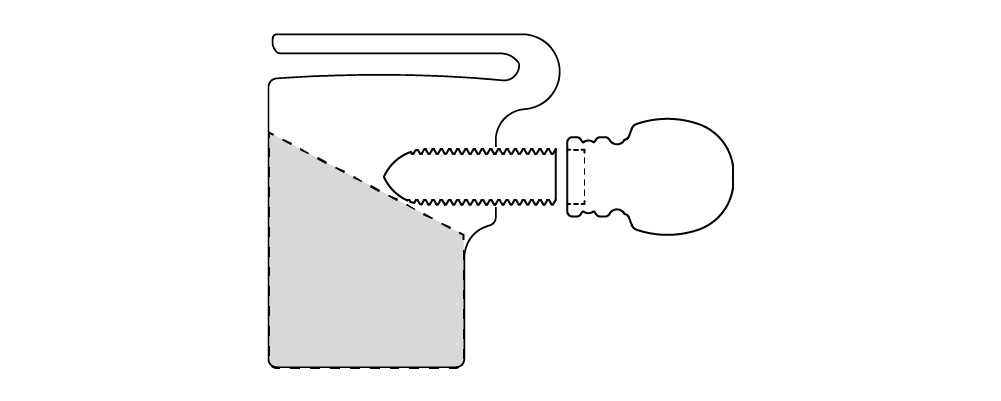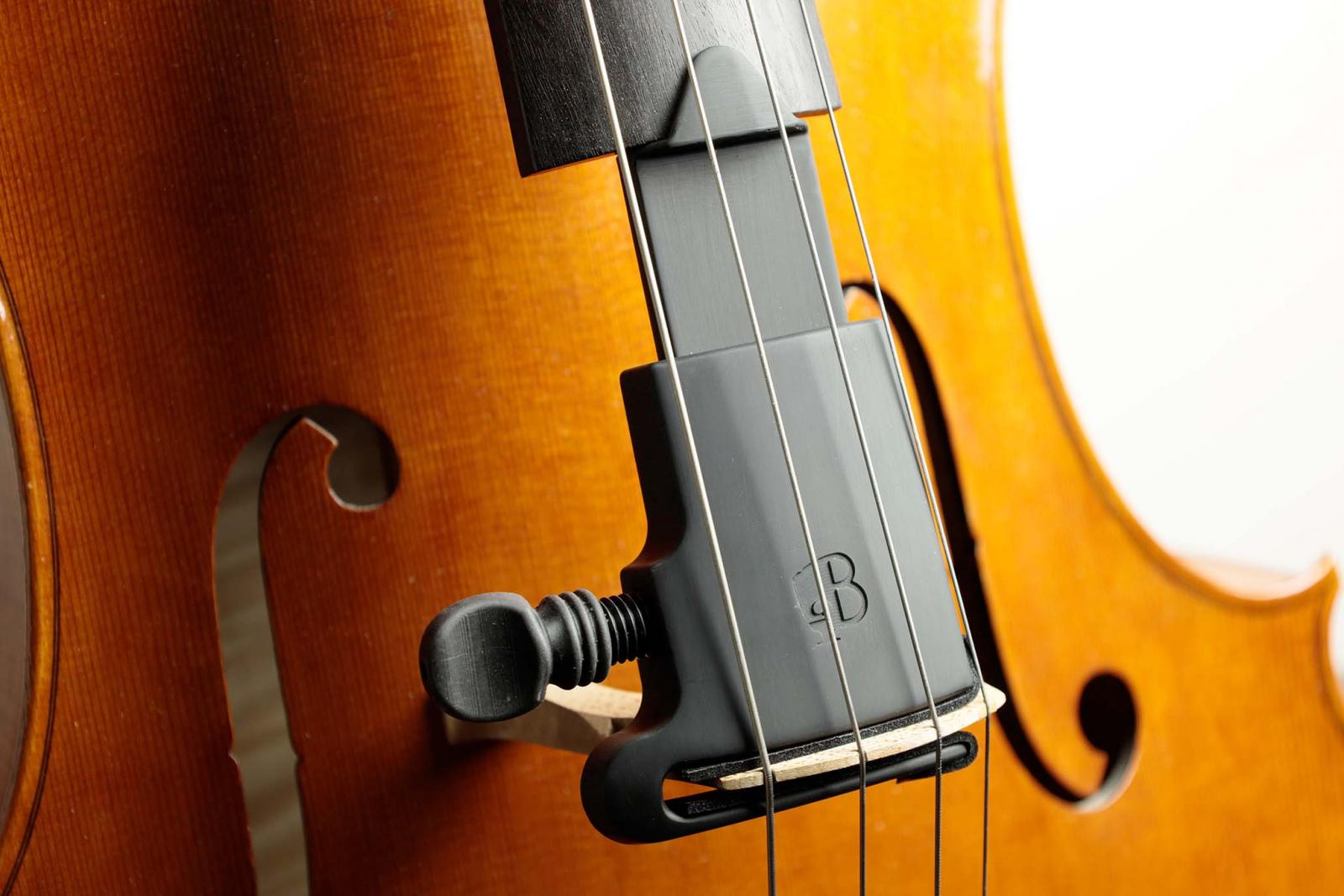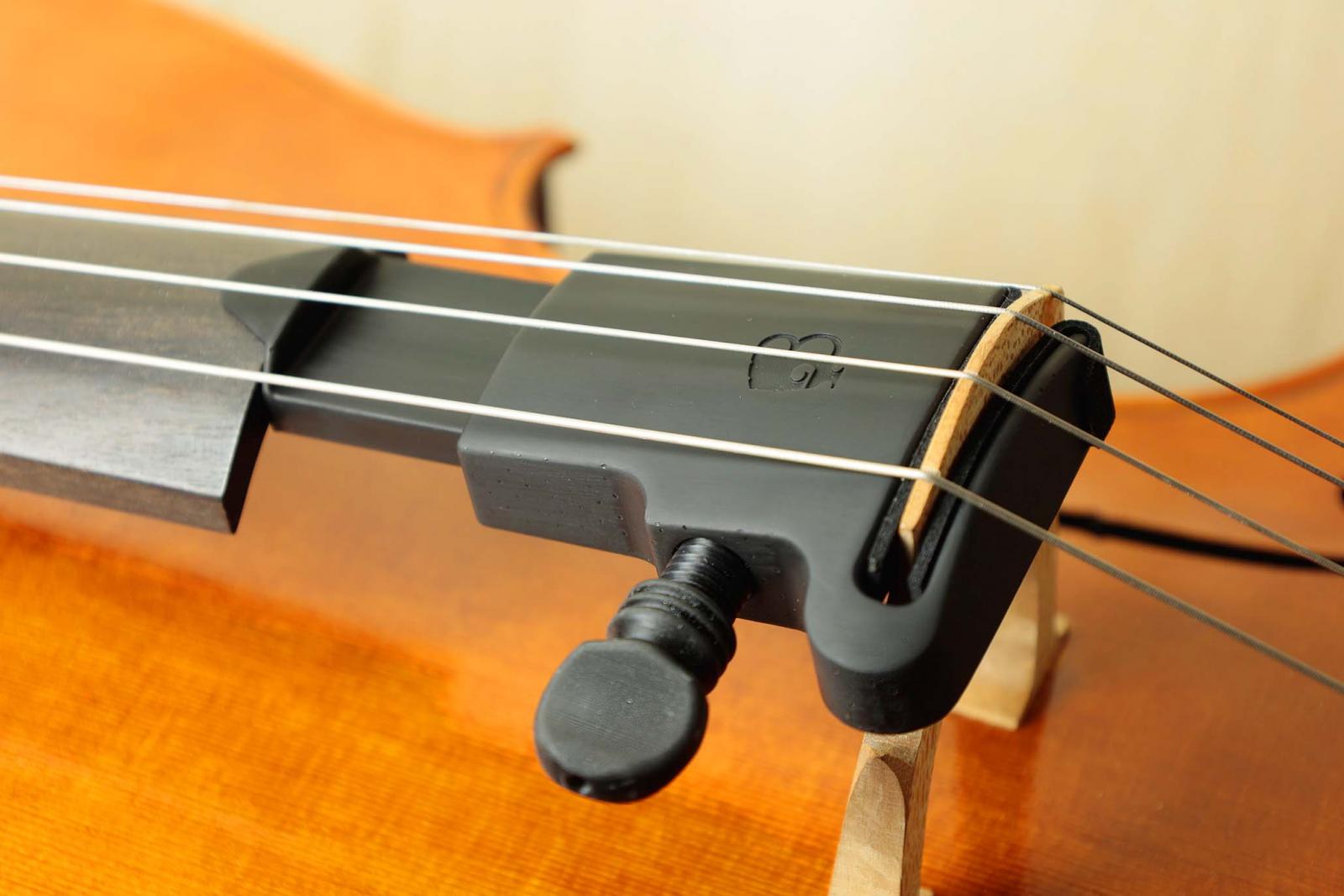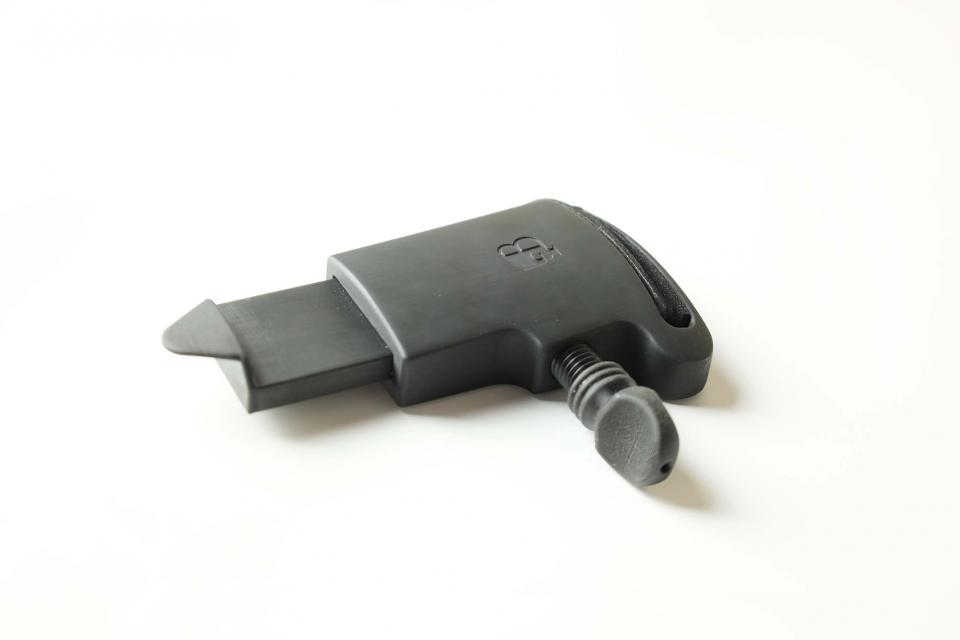Blocketto
Blocketto is a bridge-saver, an innovative accessory for cellists that prevents deformation and displacement of the cello bridge and helps you to tune the instrument safely
Functions
- You can safely tune your instrument without worrying about the bridge tending to bend towards the fingerboard
Apply Blocketto as described in the “Instructions for use” paragraph below.
Tune the instrument and remove Blocketto to start playing.
(To prevent the alteration of the tuning, you need to loosen the screw a little before removing the Blocketto)
- The correct use of Blocketto prevents irreversible bridge deformation
The tension of the strings, combined with the shape of the bridge, which is tall and thin, easily causes a deformation of the latter. Furthermore, the bridge tends to slide towards the keyboard or tilt until it falls, sometimes unexpectedly, with possible serious damage to the instrument.
Apply Blocketto after playing prevents the risks of bridge deformation.
- It makes it much easier to change the strings
Apply Blocketto before removing the string that you want to change and proceed remembering to always change one string at a time.
The Blocketto will exempt us from having to correct the position of the bridge, which tends to move due to the tensioning of the new strings.
- Keeping Blocketto on your instrument during pauses takes away part of the pressure that unloads onto the top of your instrument and is sometimes responsible for deformations
Applying the block regularly helps to lighten the body from the compression exerted longitudinally through the neck and the saddle , compression that, over time, leads to swelling of the body under the keyboard and tailpiece.
Instruction for use
Blocketto is made up of three parts:
1. The main body
2. A moving part called "lingua"
3. A screw for adjustments
How to use?
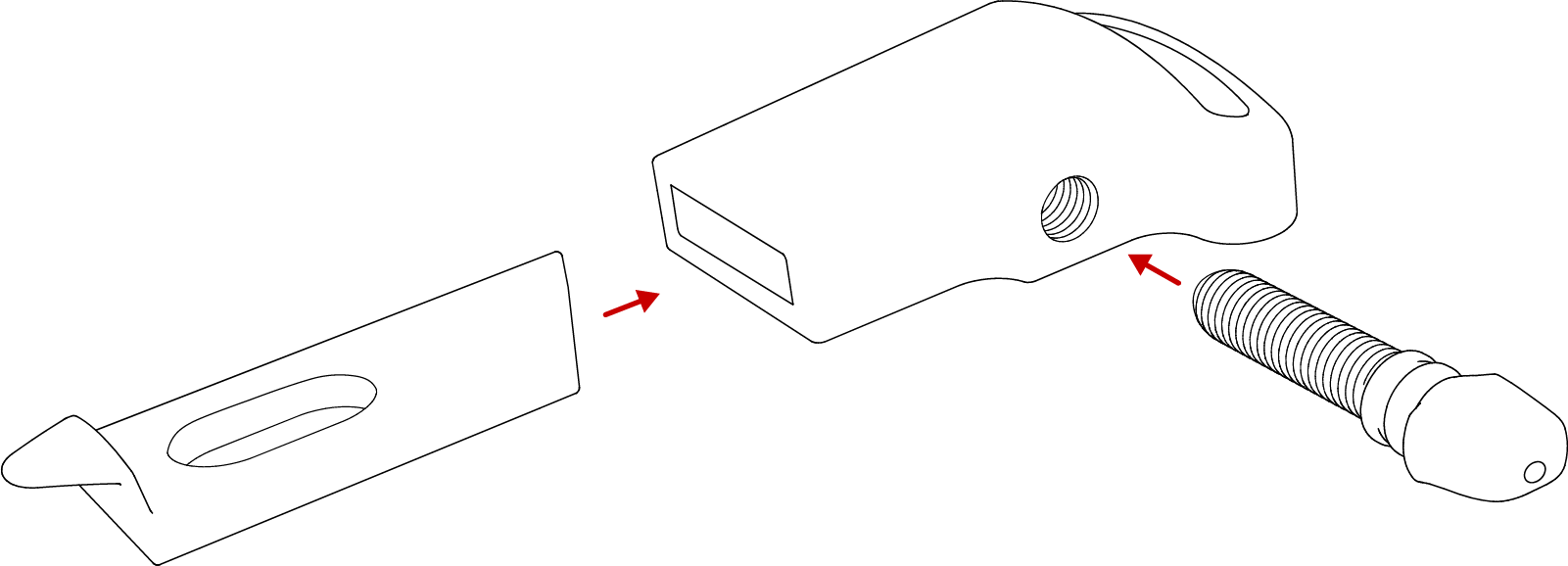
Insert Blocketto between the keyboard and the bridge, entering from the side of the lower strings, embracing the bridge with the side opening which is specially shaped to fit its surface.
Then, screw until the “lingua” sticks to the keyboard, being careful not to force excessively.
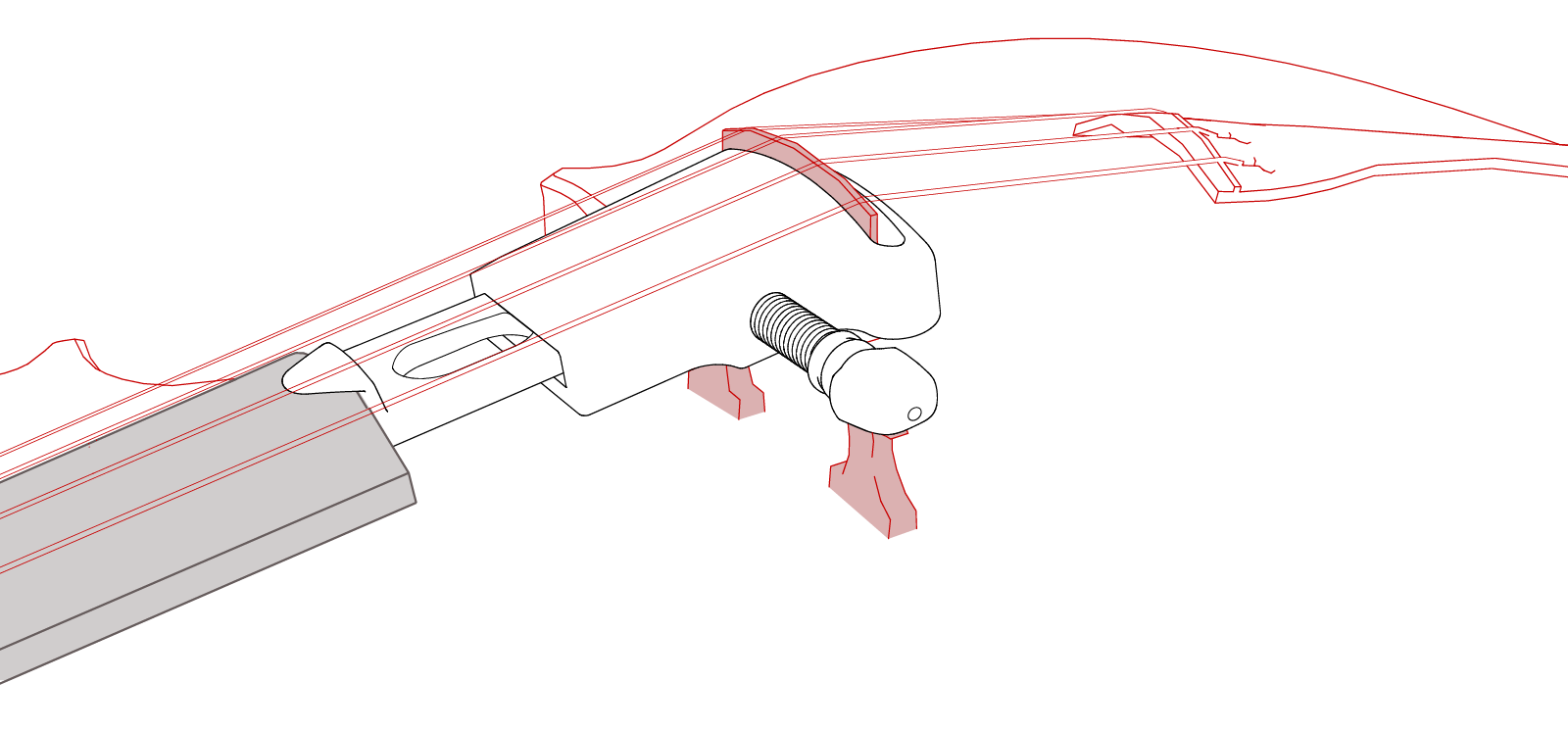
History
Origins
Paolo Sorgentone and Michele Mecatti are both violin makers from Italy who have been working together since 1998 in a studio located in the middle of Florence, which has become an important reference point for many musicians playing in String Quartets. Both of them are graduates of the Cremona Academy. They make bowed string instruments and provide a restoring and tuning service as well as buying and selling antique instruments and bows. In the last few years, they have also started a successful rental service of high-quality studio instruments which is used and much appreciated by musicians from all over the country.
Michele: “Thanks to our new rental service, the number of musicians of all levels using our studio has increased considerably, and this increase has highlighted a common problem which is often a cause of major inconvenience for many musicians.”
The problem
Difficulties arise from the functional structure of stringed instruments which are unstable because the bridge is not fixed, in any way, to the body of the instrument, but is exclusively held in position by the tension of the strings; a tension that, combined with the shape of the bridge, which is tall and thin, easily causes a deformation of the latter, which tends to arch in a non-reversible way.
Furthermore, due to its shape and the fact that it is not fixed at any point, the bridge also tends to slide towards the keyboard or tilt until it falls, sometimes unexpectedly, with possible serious damage to the instrument. This risk increases when it is necessary to give a lot of tension to the strings and especially when it is necessary to change one. There is also a risk during the tuning phase, or even due to a sudden change in air humidity. Consequently, there is often a need to put the bridge back in the correct position, even just for the tuning phase, and it is not always, as one might believe, an easy operation for everyone to do. Even among professional musicians this operation can be stressful and is not always done correctly.
Michele: “The idea of offering some help with this, and even a new solution to the problem, came to us as a result of seeing musicians of all levels, and parents of young students, coming to our shop from near and far, just to reposition the bridge. We have received many worried calls from musicians just before an exam or a recital, and often the problem arises at the weekend or during holidays when there isn’t always a violin maker open or available to offer assistance, and therefore musicians may find themselves unable to use their instruments. We decided that maybe we could do something to make the life of these musicians a little easier”.
The solution
Michele: “Thanks to the technical help of our friend Roberto Salvadori, a wind instrument restorer and expert in mechanics and design, we focused on the idea of making a safe, non-invasive, quick and easy product. This would allow for tuning in complete safety without worrying about checking and correcting the movements of the bridge and would prevent it from bending in on itself or tilting towards the keyboard due to the tension of the strings.
This is its main function, but Blocketto also offers real help when, not uncommonly, the strings loosen due to a change in humidity; When this occurs, the bridge inevitably moves and its repositioning becomes even more difficult when all the strings are loose. Applying Blocketto in advance ensures that the bridge remains in place. Furthermore, Blocketto has been designed to guarantee a musician the ability to safely change all the strings. Without the support of Blocketto, putting four strings under tension, even one at a time as it should be done, easily makes the bridge move”.
How does it work?
The mechanics of the object are extremely simple.
Once Blocketto has been inserted into the bridge through the “fork” which is specially shaped to fit its surface, we can add an external support (called a lingua) by turning a screw until the “lingua” sticks to the keyboard. In this way, the bridge and the keyboard are put in communication, creating a slight tension between the 2 elements which stabilizes the bridge through the containment action exercised by Blocketto.
The ergonomic component of Blocketto is also very practical:
First of all, you have to pick up the cello, then take Blocketto in your right hand and insert the "fork" into the bridge. Once it is centered, always using your right hand, you tighten the screw until the object is fixed and you are able to use it. (It’s important not to tighten the screw excessively, just sufficiently so that the object is stable on the instrument).
To remove it, in much the same way, we rotate the screw in the opposite direction and remove it laterally, which allows the instrument to be reused immediately.
Why use it?
As described in the previous paragraphs, the Bridge-Saver has several functions:
- You can safely tune your instrument without worrying about the bridge tending to bend towards the fingerboard
- The correct use of Blocketto prevents irreversible bridge deformation
- It makes it much easier to change the strings
- In case of total loss of tension in the strings, the bridge doesn’t fall, and you can easily put it back in its correct position
- Keeping Blocketto on your instrument during pauses takes away part of the pressure that unloads onto the top of your instrument and is sometimes responsible for deformations.
Once used, removing Blocketto to start playing is quick and easy, and positioning it on the instrument before putting it back in the case protects the bridge from being damaged by pressure exerted by the strings even if the instrument is not in use.
Blocketto is already available in a limited edition at the Sorgentone & Mecatti lutherie; however, we believe that the project should become more widely available, making the life of musicians from all over the world a little easier with a simple gesture.
Violin maker's handbook
Shorten the tongue
1.
With a ruler, measure the distance between the bridge and the top of the keyboard (see figure below)
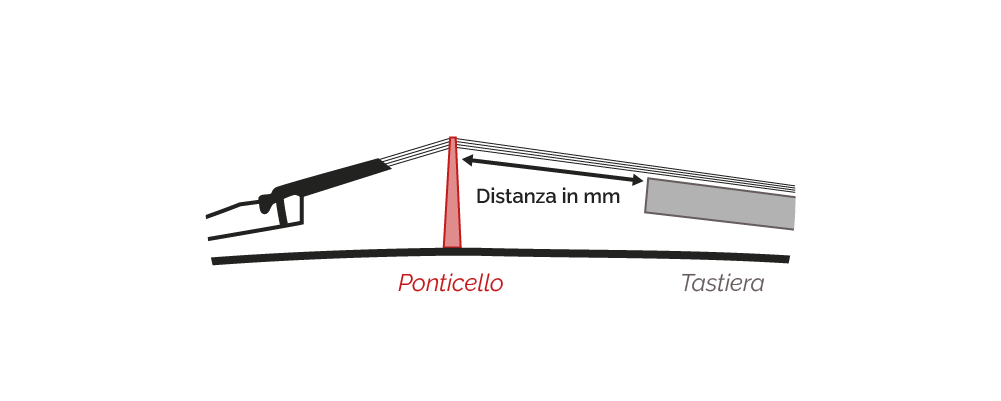
2.
Once the measurement is obtained, with a simple hacksaw, cut the tongue through the corresponding slot, following the reference indications indicated in the table below.
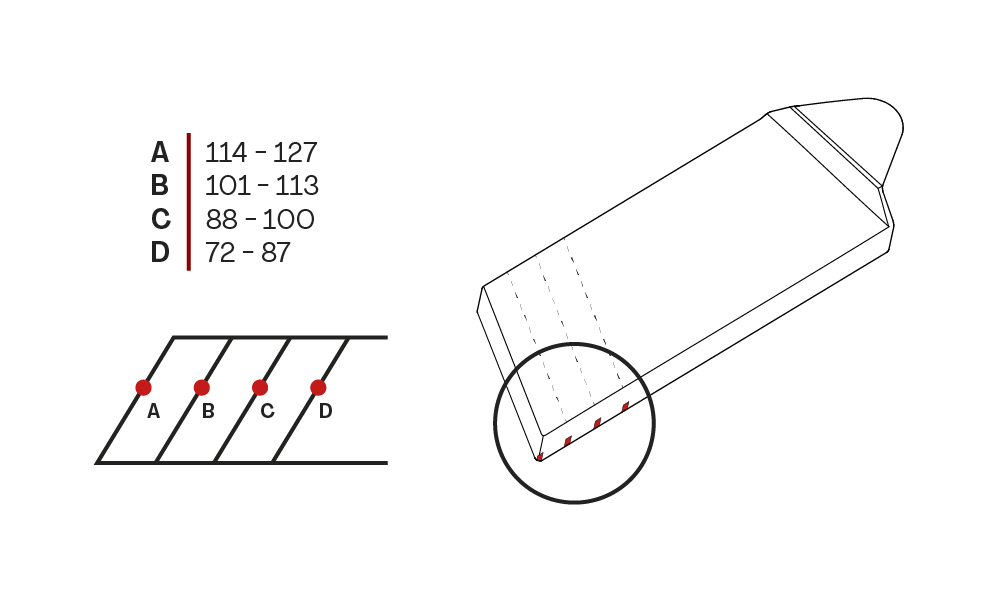
Shorten the screw
1.
Once the Blocketto has been correctly positioned on the Cello, measure 15 mm from the base of the Blocketto (see below) and make a visible mark. (It is recommended to use a white pencil).
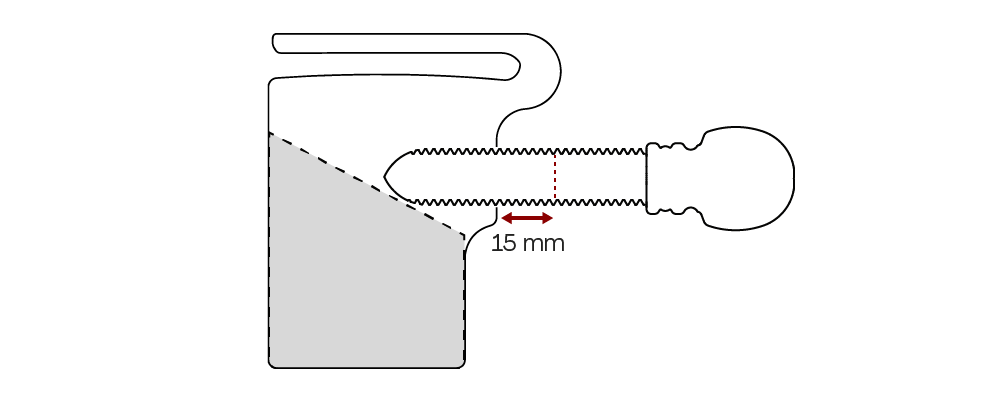
2.
At this point, it is possible to saw the screw following the traced mark, then unscrew the head and reposition it on the new part obtained.
